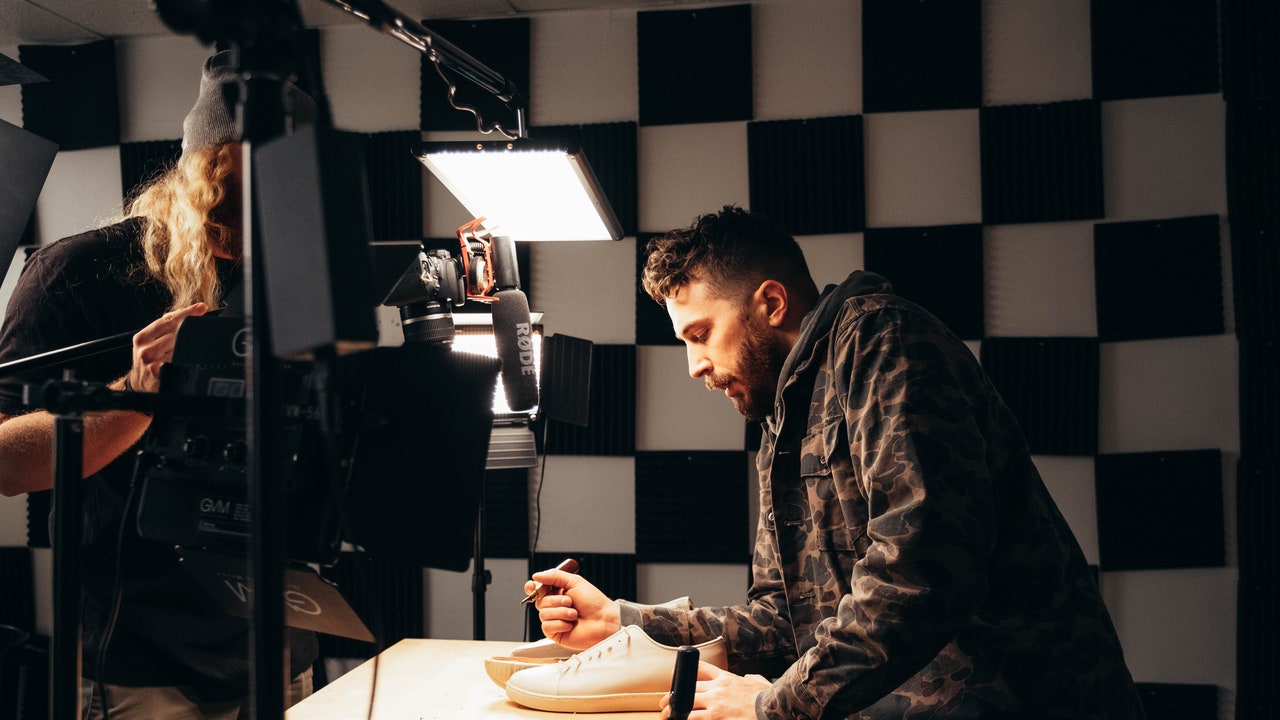This story is from Manual, GQ’s flagship newsletter offering useful advice on style, health, and more, five days a week. Sign up here to get it free.
Weston Kay didn’t set out to become YouTube famous, and even now, with close to a million followers and tens of millions of views, he still doesn’t particularly love being on camera. What he does care about is well-made boots. And that’s why he spends his days spreading the gospel of Goodyear welts, vegetable-tanned leather, and hand-lasting by bandsawing shoes and boots in half to reveal how they’re made.
Raised on a farm in central Utah, Kay grew up around guys for whom workwear is a tool like any other, and learned the value of a good pair of boots through stints on construction and firefighting crews. He was partway through a degree in metallurgy (and funding his tuition through selling plasma) when he hit on the idea that would, half a million dollars in crowdfunding later, become Rose Anvil, a leather goods brand specializing in professional-grade camera harnesses. When the pandemic stalled the event photography business (and, by extension, the camera harness business) Kay needed a way to keep things running, so he cut a pair of Doc Martens in half, uploaded it to the internet, and a YouTube star was born.
After shooting nearly 1,000 videos and destroying $100,000 worth of covetable kicks, from Alden Indys and Clarks Wallabees to Nike Dunks and MSCHF’s infamous Big Red Boots, he’s become one of the internet’s foremost footwear reviewers. With a leatherworker’s eye for quality, a nose for marketing spin, and an array of DIY testing gear (the waterproof test involves an aquarium and a rock), he serves his audience a rare glimpse at what goes into making a pair of shoes, and the ways in which brands often don’t live up to their promises. While he’s best known for debunking the quality of the worst offenders (you might want to think twice about buying those Gucci Aces), he’s equally vocal about brands that get it right, particularly indie makers like White’s, Nicks, and Goral. We chatted with Kay about his most surprising discoveries, his favorite boot brands, and the best way to tell if a pair of shoes is worth the price on the tag.
GQ: What’s the main thing you hope to get across through these videos?
Weston Kay: I think the value we provide is down to our blue-collar background and my leatherworking background. It’s a function-first approach to footwear instead of the sneakerhead hype-culture perspective. It’s not bad to have a hype culture—that’s what we’re actively trying to bring into the high-end footwear world, along with education and holding brands accountable.
What does cutting a boot in half tell you about how it’s made?
Ever since boots and shoes have been manufactured, people have been cutting them in half because it’s the most foolproof way to show the quality. It also makes it impossible to hide what you’re doing and what you don’t want the consumer to know.
Is there an easier way to tell if a pair of shoes is good quality?
It’s tough because there are so many variables, and brands are so good at faking it. Like, you could look for that stitch around the toe that tells you it’s traditionally made, and then you cut it in half and they just glued that on. But as a general rule, if you’re looking for durable, high-quality footwear, the more leather, the better. The more leather they have, the more expensive it is to make those boots.

